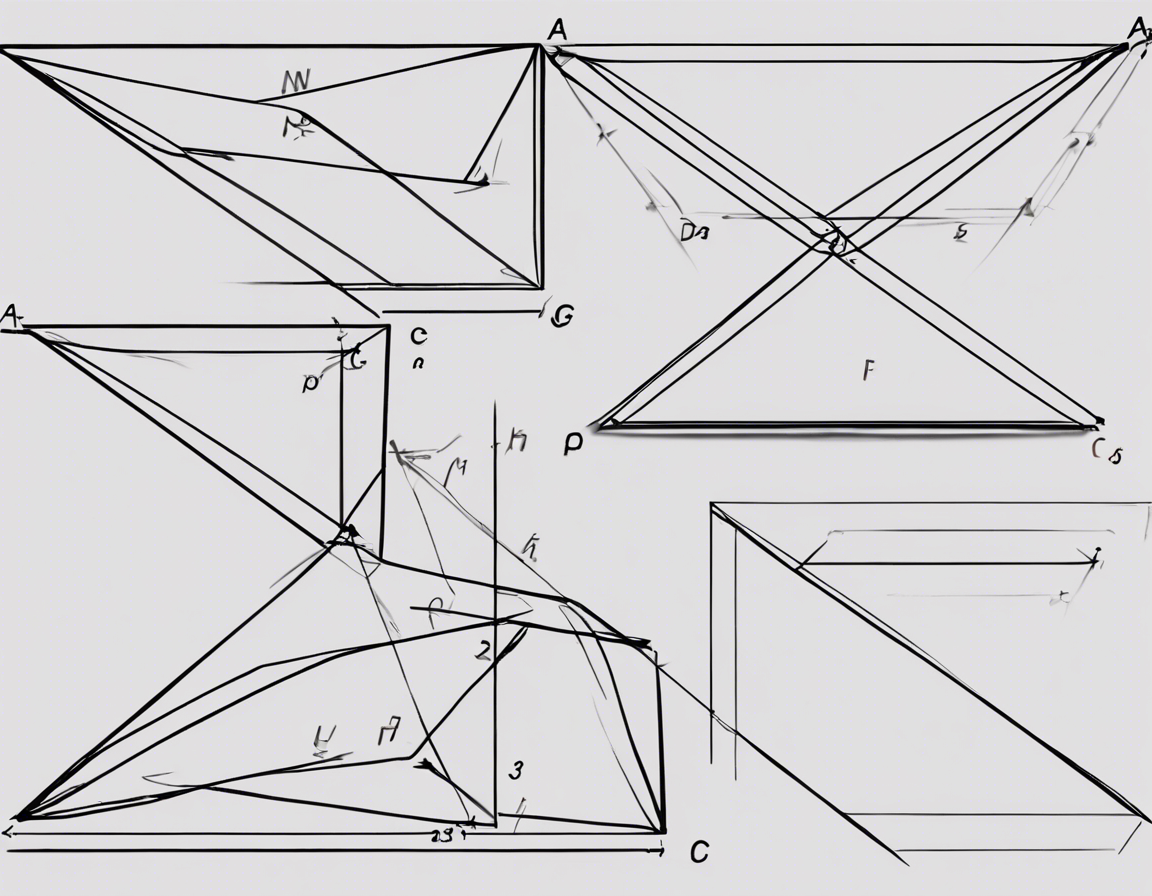Adjacent angles in a parallelogram play a crucial role in understanding the properties of this geometric shape. A parallelogram is a quadrilateral with opposite sides that are parallel and equal in length. As a result of these characteristic features, several properties emerge, one of which involves adjacent angles.
Understanding Parallelograms
Before delving into the concept of adjacent angles within a parallelogram, it is essential to have a clear understanding of this particular shape’s properties. Here are some key characteristics of a parallelogram:
Opposite Sides
In a parallelogram, opposite sides are equal in length and parallel to each other. This means that if side AB is parallel to side CD, then AB = CD, and BC = AD.
Consecutive Angles
Consecutive angles in a parallelogram are supplementary, meaning that the sum of two adjacent angles adds up to 180 degrees. If angle 1 and angle 2 are consecutive angles, then angle 1 + angle 2 = 180 degrees.
Adjacent Angles in a Parallelogram
Adjacent angles are angles that share a common vertex and a common side. In a parallelogram, adjacent angles have some specific relationships and characteristics:
Opposite Angles
Adjacent angles in a parallelogram are always supplementary, meaning that the sum of the measures of two adjacent angles is 180 degrees. This relationship is a direct consequence of the opposite sides of a parallelogram being parallel.
Pair of Adjacent Angles
Consider a parallelogram where angle A and angle B are adjacent angles, with angle A at the intersection of sides AB and AD, and angle B at the intersection of sides AB and BC. The relationship between these two adjacent angles is such that angle A + angle B = 180 degrees.
Properties of Adjacent Angles in a Parallelogram
-
Sum of Measures: The sum of the measures of two adjacent angles in a parallelogram is always 180 degrees.
-
Consecutive Angles: Adjacent angles are also known as consecutive angles in a parallelogram.
-
Forms a Linear Pair: Adjacent angles in a parallelogram form a linear pair, meaning they are adjacent supplementary angles.
Relationship with Other Angles
The concept of adjacent angles in a parallelogram also influences the relationships with other types of angles within the shape. Here are a few key points to consider:
Diagonals
In a parallelogram, the diagonals bisect each other. When this property is combined with the relationships of adjacent angles, it leads to interesting conclusions about the sum of angle measures within the shape.
Interior Angles
The interior angles of a parallelogram add up to 360 degrees. By understanding the properties of adjacent angles, one can derive valuable insights into the angles’ relationships within the parallelogram.
Practical Applications
The knowledge of adjacent angles in a parallelogram extends beyond geometry textbooks. Here are some practical applications where this concept comes into play:
-
Architectural Design: Architects utilize the properties of parallelograms, including adjacent angles, in designing structures to ensure stability and symmetry.
-
Engineering: Engineers apply the principles of parallelograms in various fields, such as bridge construction and mechanical design, where understanding angles is essential.
FAQs (Frequently Asked Questions)
-
What is a parallelogram?
A parallelogram is a quadrilateral with opposite sides that are parallel and equal in length. -
What are adjacent angles in a parallelogram?
Adjacent angles in a parallelogram are angles that share a common vertex and a common side. -
What is the relationship between adjacent angles in a parallelogram?
Adjacent angles in a parallelogram are supplementary, meaning their sum is 180 degrees. -
How do adjacent angles in a parallelogram form a linear pair?
Adjacent angles in a parallelogram add up to 180 degrees and form a linear pair. -
How are adjacent angles in a parallelogram applied in real-world scenarios?
Knowledge of adjacent angles in a parallelogram is used in architecture, engineering, and various fields where understanding angles is crucial.
By grasping the concept of adjacent angles in a parallelogram, one can appreciate the interconnectedness of geometric properties and their real-world applications. This foundational knowledge lays the groundwork for further exploration into the realm of geometry and mathematical principles.
